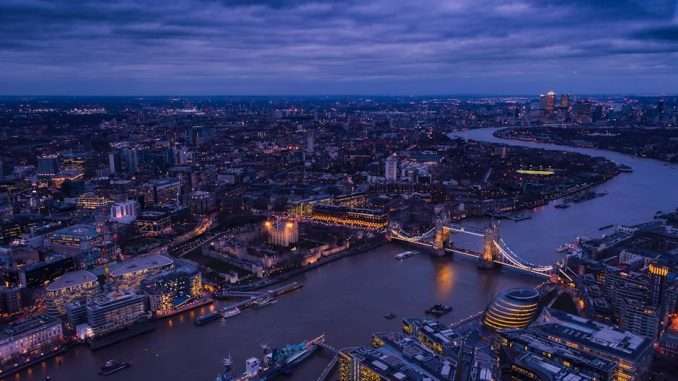
In the ever-evolving heart of London, the skyline serves not merely as a picturesque backdrop but as a dynamic tapestry interwoven with history, culture, and architectural heritage. Amidst the hustle and bustle of the city and its towering skyscrapers, city planners meticulously craft planning guidance to ensure that the iconic views of landmarks such as St Paul’s Cathedral, the Monument, and the Tower of London remain inviolate. This delicate equilibrium between preserving heritage and embracing modernity is maintained through rigorous planning controls and policies designed to protect these historic vistas, even as the city continues to grow and transform.
Read more about sustainable development.
The safeguarding of London’s skyline commenced in earnest in 1937 with the introduction of the ‘St Paul’s Heights’ policy. This pioneering initiative was aimed at preserving specific sightlines to St Paul’s Cathedral, ensuring that the magnificent dome would not be overshadowed by the rising skyscrapers of the era. Over the decades, this policy has evolved into a sophisticated and detailed grid of maximum building heights, accessible through the City of London Interactive Mapping tool. This grid remains a cornerstone of the city’s planning framework, ensuring that the majestic silhouette of St Paul’s Cathedral continues to dominate the skyline as originally intended.
Central to the preservation of London’s skyline are the London View Management Framework (LVMF) and the Protected Views Supplementary Planning Document (SPD). Developed by the Mayor of London, the LVMF delineates key views and river prospects, including those of St Paul’s Cathedral and the Tower of London. This framework offers detailed guidance on managing and preserving these views, ensuring that any development within these sightlines undergoes meticulous scrutiny. Complementing the LVMF, the Protected Views SPD furnishes more granular planning guidance, incorporating specific studies such as the ‘Monument Views Study,’ which outlines views from the Monument as of April 2020, underscoring the significance of these perspectives for public appreciation. Together, these documents form the backbone of the city’s planning guidance, ensuring that the historic skyline remains intact amidst the city’s continuous evolution.
The construction of tall buildings in the City of London is governed by stringent policies articulated in the London Plan 2021 and the City of London Local Plan 2015. These policies are crafted to balance the need for urban development with the preservation of the city’s historic character. All locations within the City are deemed sensitive to tall buildings, with certain areas specifically designated as unsuitable for such construction, particularly conservation areas and zones affecting protected views. Proposals for new tall buildings are meticulously evaluated based on their impact on the city’s skyline and heritage assets. The ‘Tall Buildings in the City of London (2020)’ study plays a pivotal role in this evaluation process, assessing the character and heritage significance of tall building proposals to ensure that new developments do not compromise the city’s historic skyline features.
The ‘St Paul’s Heights Study 2015’ is a technical document available in the Planning Policy Library, offering a comprehensive analysis of the history and form of St Paul’s Heights. It evaluates infringing buildings and existing views, providing guidance on utilising spatial data effectively, available at the open data forum, and summarising issues related to St Paul’s Heights. Similarly, the ‘Monument Views Study’ focuses on specific views from the Monument, identifying key features and familiar skyline landmarks important for public viewing. This study, which complements the Protected Views SPD, underscores the significance of maintaining these historic sightlines.
The importance of heritage assets is a paramount consideration in evaluating tall building proposals. The ‘St Paul’s Heights’ policy aims to enhance significant views of St Paul’s Cathedral, ensuring that new constructions respect the established grid of maximum building heights. This policy not only preserves the visual prominence of the cathedral but also maintains the historical context of the surrounding area. Moreover, the ‘Tall Buildings in the City of London (2020)’ study evaluates the impact of tall buildings on the historic skyline features, providing a comprehensive assessment of how new developments interact with existing heritage sites. This evaluation process ensures that the character and amenity of the city’s surroundings are preserved.
As London continues to grow, the challenge of balancing modern development with the preservation of historical vistas becomes increasingly complex. The Mayor of London’s London View Management Framework and the City of London’s planning policies provide a robust framework to navigate this challenge. These policies are not static; they evolve with new studies and insights, such as the ‘St Paul’s Heights Study 2015’ and the ‘Monument Views Study,’ which continually inform and refine planning guidance. The intricate web of policies, studies, and frameworks ensures that new constructions do not detract from the iconic views that define the City’s skyline.
The City of London’s approach to planning and development is a testament to its commitment to preserving its rich historical heritage while accommodating modern growth. The meticulous planning controls in the City of London demonstrate a commitment to preserving the iconic skyline while accommodating the city’s dynamic growth. By safeguarding views of landmarks like St Paul’s Cathedral, the Monument, and the Tower of London, the city ensures that its rich heritage remains an integral part of its identity, offering residents and visitors alike a glimpse into its storied past amidst its modern landscape. As the city continues to evolve, these planning guidelines will remain pivotal in maintaining the delicate balance between heritage and modernity, ensuring that the historic landmarks that have stood the test of time continue to inspire future generations. The intertwined narratives of heritage protection and modern development create a seamless tapestry that defines London’s skyline, making it a symbol of both the city’s illustrious past and its promising future.


Be the first to comment